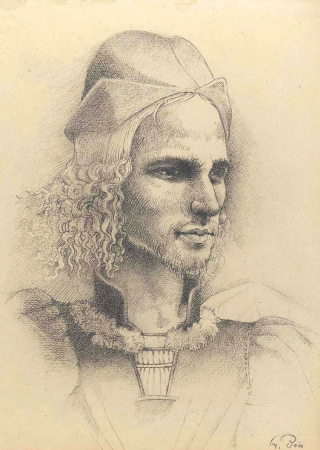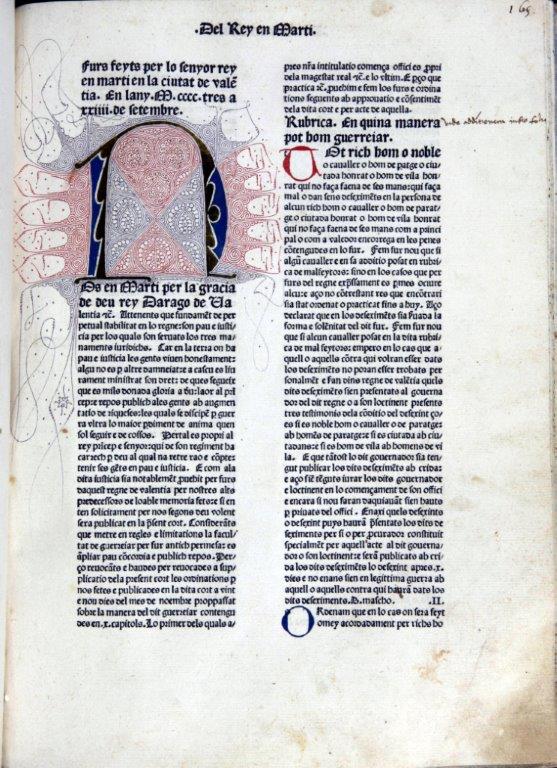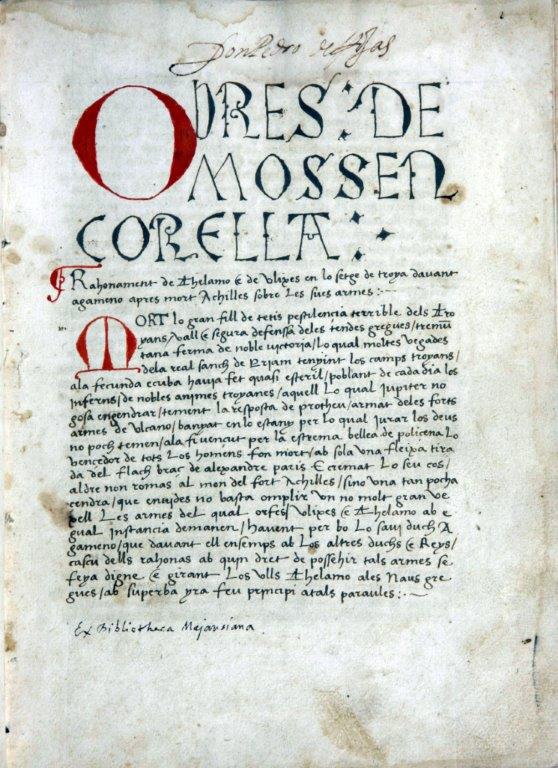

[at the expense of Gabriel Luis de Arinyo], [on. 14 April, 1482] UV Historic Library 14(1) |
Joan Roís de Corella was one of the most subtle and educated lyrical poetry and prose writer of the Humanism of 15th Century Valencia. The century of Ausiàs March, Joanot Martorell, Jaume Roig or Isabel de Villena. Corella, being regarded as a key writer in the transition from medieval literature to The Renaissance, is author of a wide and varied work which ranges from poems to profane, religious and mythological works, and life of saints and translations of the great classics of Theology. However, despite the great fame and celebrity acquired among his contemporaries, his life and his literary production were forgotten during centuries and are, still nowadays, one of the best known leading figure of the Valencian Golden Age.
With the aim of disseminating his life and work, the Acadèmia Valenciana de la Llengua, in collaboration with the Valencian Library Nicolau Primitiu and the UV, launched different initiatives, amongst which is worth highlighting a great exhibition entitled "Roís de Corella i el seu temps" (Roís de Corella and his time), that was presented in the Monastery of San Miguel de los Reyes between February and May of 2014.
|
made a romance by Joan Roís de Corella [Lope de la Roca : at the expense of Miquel Albert], 1495 València, BH Inc. 180 |
One of these pieces is, by itself, a landmark in the history of printing. Roís de Corella participated, along with leading figures such as Jaume Roig or Lluís Alcanyís, in the poetry contest called in February 1474 by the viceroy of Valencia, Lluís Despuig. His printed testimony, “Les obres e trobes en lahors de la Verge Maria” is considered to be the first incunabulum in the Spanish language and a unique sample of it is preserved in this Historical Library.
Special mention must be made of his translation of the Psalterio, harshly persecuted by the Inquisition, from which a manuscript copy of the 19th Century is preserved by the UV.

Segle XVI, [148] f. ; in folio, Filigr. mà i estel, Universitat de València. Biblioteca Històrica BH Ms. 728 |











